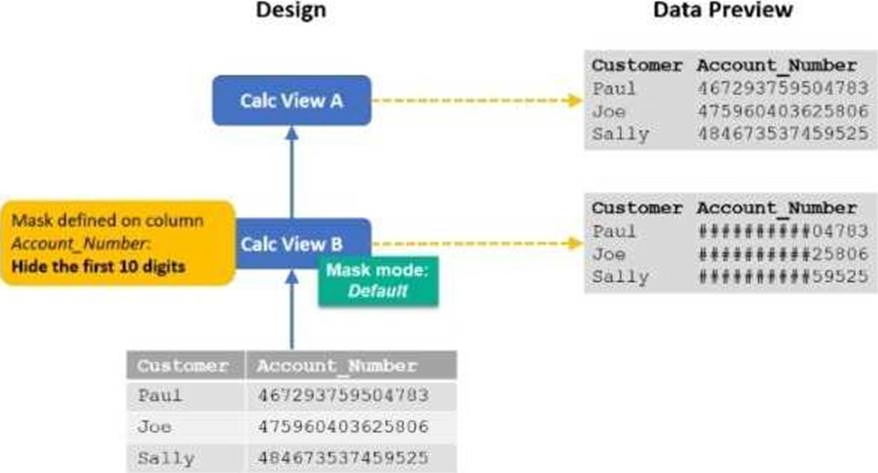SAP C_HAMOD_2404 SAP Certified Associate – Data Engineer – SAP HANA Online Training
SAP C_HAMOD_2404 Online Training
The questions for C_HAMOD_2404 were last updated at Dec 25,2025.
- Exam Code: C_HAMOD_2404
- Exam Name: SAP Certified Associate - Data Engineer - SAP HANA
- Certification Provider: SAP
- Latest update: Dec 25,2025
In your calculation view, you want to consume a custom data source defined using SQLScript.
In which type of object do you write your code?
- A . Scalar function
- B . Table function
- C . Anonymous block
- D . Procedure
What are some of the typical roles in an SAP HANA Cloud implementation? Note: There are 2 correct answers to this question.
- A . Data architect
- B . Modeler
- C . Kubernetes expert
- D . ABAP developer
In a calculation view, your table function node executes a table function that requires input parameters.
How can you fill the input parameters of the table function? Note: There are 3 correct answers to this question.
- A . Define constant values.
- B . Assign a hierarchy node.
- C . Reference the output of a procedure.
- D . Map columns from lower nodes.
- E . Create and map an input parameter
In a database module, what is the purpose of the .hdiconfig file?
- A . To specify an external schema in which calculation views will get their data
- B . To specify which HDI plug-ins are available
- C . To specify in which space the container should be deployed
- D . To specify the namespace rules applicable to the name of database objects
You are deploying a new calculation view, A, that uses calculation view B, as shown in the diagram.

When you preview calculation view A, the account number is not masked.
What could be the reason?
- A . You previewed the data with the technical user in SAP Business Application Studio.
- B . You did not define masking in calculation view A.
- C . The UNMASKED privilege has NOT been granted at the schema level.
- D . The type of the Account_Number column is VARCHAR.
What are the limitations of using a full outer join in a star join node? Note: There are 2 correct answers to this question.
- A . It must appear in the last DIMENSION in the star join node.
- B . It is restricted to one DIMENSION in a star join node.
- C . It CANNOT be mixed in the same star join node with other join types.
- D . Only one column can be included in the join condition.
You combine two tables in a join node using multiple columns in each table.
Why do you enable the dynamic join option? Note: There are 2 correct answers to this question.
- A . To ensure that the join execution only uses the join columns requested in the query
- B . To ensure that the aggregation always happens after the join execution
- C . To allow data analysis at different levels of granularity with the same calculation view
- D . To force the calculation at the relevant level of granularity, even if this level is not the grouping level defined by the query
You create a table function to remove historic records, sum the current total weekly working hours for each employee, and update the personnel table with the results. The deployment of the table function fails.
Which of the following could be a valid reason?
- A . Your function includes a TRUNCATE statement.
- B . Your function refers to a scalar function.
- C . You did NOT define a valid table type.
- D . You did not define at least one input parameter.
Why would you choose an HDI-shared service plan instead of a schema service plan? Note: There are 3 correct answers to this question.
- A . You want to use SAP Business Application Studio.
- B . You want to use containers to isolate objects.
- C . You want to develop calculation views.
- D . You want to create database objects using source files.
- E . You want to use synonyms to access external data.
You want to ensure that your calculation view does not give unexpected results for a query that is based on any combination of columns.
What is the recommended approach for verifying the results?
- A . Set the HIDE property for columns NOT required.
- B . Write and execute a custom SQL query in the SQL Console.
- C . Select Data Preview for the calculation view.
- D . Select and deselect columns from the output mapping.
Latest C_HAMOD_2404 Dumps Valid Version with 89 Q&As
Latest And Valid Q&A | Instant Download | Once Fail, Full Refund

